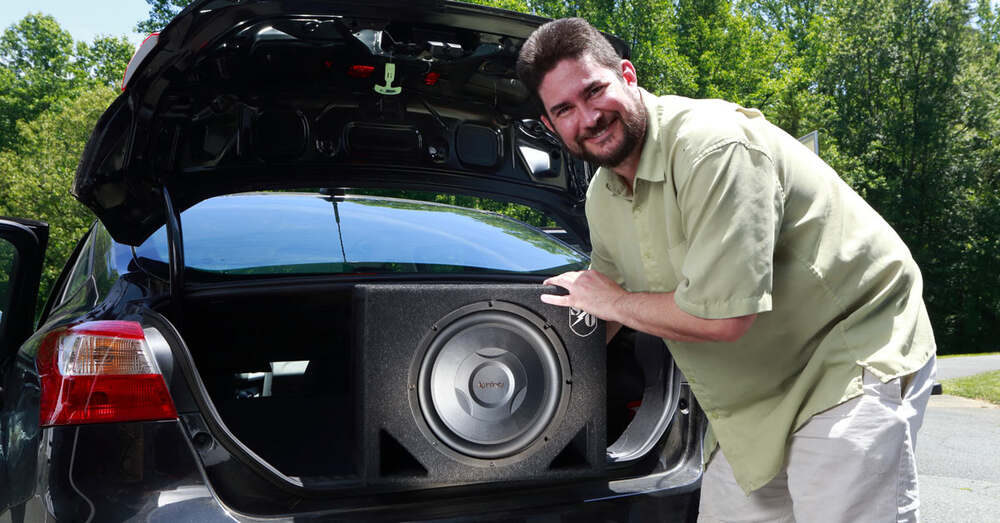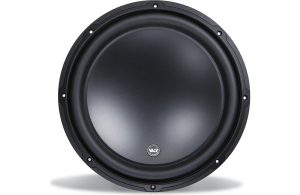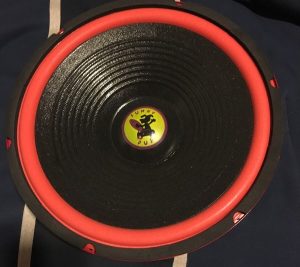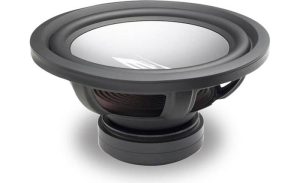When upgrading your car’s audio system, you might wonder whether a subwoofer box truly enhances sound quality. The short answer? Absolutely, it does. A subwoofer box transforms your listening experience by delivering deep, rich bass that standard speakers can’t match. However, the extent of its impact depends on various factors, such as the type of enclosure, the subwoofer’s design, and your vehicle’s acoustics. In this comprehensive guide, we’ll explore why a subwoofer box matters, how it works, the different types available, and practical tips to optimize your car audio setup for booming bass. Let’s dive in and uncover the secrets to achieving premium sound on the road.
Contents
- Why a Subwoofer Box Matters for Car Audio
- How a Subwoofer Box Works
- Types of Subwoofer Boxes: Which One Suits Your Needs?
- Key Benefits of Using a Subwoofer Box
- Factors to Consider When Choosing a Subwoofer Box
- Common Mistakes to Avoid
- Tips to Optimize Your Subwoofer Box Performance
- Subwoofer Box vs. No Box: A Real-World Comparison
- Cost Considerations: Is a Subwoofer Box Worth It?
- Final Thoughts: Elevate Your Car Audio with a Subwoofer Box
Why a Subwoofer Box Matters for Car Audio
A subwoofer box, also called an enclosure, serves as the backbone of your car’s bass performance. Without it, a subwoofer struggles to produce clear, powerful low-frequency sounds. The enclosure controls the subwoofer’s cone movement, ensuring the bass remains tight and undistorted. It also protects the speaker from damage caused by vibrations or debris in your vehicle. By housing the subwoofer, the box creates an environment where air pressure enhances sound output, making your music feel immersive.
Think of a subwoofer box as a tailored suit for your speaker. Just as a well-fitted suit enhances your appearance, a properly designed enclosure amplifies the subwoofer’s performance. It prevents sound waves from the back of the speaker from canceling out those from the front, a common issue with free-air setups. This cancellation, known as phase interference, muddies the bass. A box eliminates this problem, delivering clean, punchy low-end frequencies that make your favorite tracks come alive.
Beyond sound quality, a subwoofer box adds efficiency. It allows the subwoofer to produce louder bass with less power, reducing strain on your amplifier. This efficiency translates to better performance and longevity for your audio components. Whether you’re a casual listener or a car audio enthusiast, a subwoofer box elevates your system’s capabilities, making it a critical investment for superior sound.
How a Subwoofer Box Works
To understand the role of a subwoofer box, let’s break down its function. A subwoofer produces bass by vibrating a cone, which moves air to create sound waves. In a car, these vibrations occur in a confined space, and without an enclosure, the sound waves from the back of the subwoofer interfere with those from the front. This interference reduces bass output, resulting in weak, distorted sound.
A subwoofer box solves this by isolating the rear sound waves. It creates a controlled environment where the subwoofer can operate efficiently. The box’s internal volume and design influence how the air inside interacts with the subwoofer’s cone. For example, a sealed box uses trapped air as a spring, providing precise control over cone movement for accurate bass. A ported box, on the other hand, uses a vent to amplify specific frequencies, producing louder, deeper bass.
The box’s material, typically medium-density fiberboard (MDF) or plywood, also plays a role. These materials resist vibrations, ensuring the enclosure doesn’t rattle or distort the sound. By carefully designing the box to match the subwoofer’s specifications, you optimize its performance, achieving the perfect balance of volume, clarity, and depth.
Types of Subwoofer Boxes: Which One Suits Your Needs?
Not all subwoofer boxes deliver the same sound. Each type offers unique characteristics, catering to different music preferences and vehicle setups. Let’s explore the most common types to help you choose the best fit for your car audio system.
Sealed Boxes: Precision and Accuracy
Sealed boxes, also known as acoustic suspension enclosures, are airtight and compact. They provide tight, accurate bass, making them ideal for music genres like jazz, classical, or rock, where precision matters. The sealed design uses the air inside the box to control the subwoofer’s cone, preventing over-excursion and distortion. This results in clean, well-defined low frequencies.
Sealed boxes shine in smaller vehicles where space is limited. Their compact size makes them easier to install, and they require less power than other enclosures, making them energy-efficient. However, they produce less volume compared to ported boxes, so if you crave earth-shaking bass, you might need a more powerful amplifier.
Ported Boxes: Loud and Booming
Ported boxes, or vented enclosures, feature an opening (port) that allows air to escape, amplifying low frequencies. This design produces louder, deeper bass, perfect for hip-hop, EDM, or rap enthusiasts who want their music to rattle the windows. The port tunes the box to a specific frequency, boosting output at that range for maximum impact.
While ported boxes deliver impressive volume, they’re larger than sealed boxes, requiring more trunk space. They also need precise tuning to avoid boomy or muddy sound. If you prioritize loudness and have room in your vehicle, a ported box offers a thrilling listening experience.
Bandpass Boxes: Focused Power
Bandpass boxes combine elements of sealed and ported designs, using two chambers to focus bass output within a specific frequency range. This creates intense, powerful bass that’s ideal for bass-heavy music. Bandpass enclosures excel at producing high volume, making them a favorite for car audio competitions.
However, bandpass boxes are less versatile. Their narrow frequency range can make them less suitable for varied music genres, and their complex design requires careful tuning. They’re also bulky, so ensure your vehicle has enough space before choosing this option.
Free-Air Subwoofers: A Box-Free Alternative?
Free-air subwoofers don’t require a traditional box, as they use the car’s trunk or rear deck as an enclosure. They’re a space-saving option, ideal for compact vehicles or minimalist setups. These subwoofers mount directly onto a surface, such as a rear shelf, and produce decent bass without occupying trunk space.
While free-air setups are convenient, they often lack the depth and power of boxed subwoofers. Without an enclosure, the bass can sound less controlled, and the subwoofer is more vulnerable to damage. If you’re short on space but still want quality bass, a free-air subwoofer might work, but a boxed setup generally outperforms it.
Key Benefits of Using a Subwoofer Box
Investing in a subwoofer box offers several advantages that enhance your car audio experience. Here are the top benefits:
- Enhanced Sound Quality: A box ensures clear, distortion-free bass by controlling sound waves and preventing interference. This creates a richer, more immersive listening experience.
- Increased Efficiency: Enclosures allow subwoofers to produce more bass with less power, reducing strain on your amplifier and improving overall system performance.
- Durability: A box protects the subwoofer from physical damage, such as vibrations or debris, extending its lifespan.
- Customizable Sound: Different box types let you tailor the bass to your music preferences, whether you want tight accuracy or booming volume.
- Vehicle Compatibility: With various sizes and designs, you can find a box that fits your car’s space constraints without sacrificing sound quality.
By incorporating a subwoofer box, you unlock the full potential of your audio system, making every drive a concert-like experience.
Factors to Consider When Choosing a Subwoofer Box
Selecting the right subwoofer box requires careful consideration of your vehicle, music preferences, and budget. Here are key factors to keep in mind:
Vehicle Space
Measure your car’s available space, typically in the trunk or under a seat, to ensure the box fits. Sealed boxes are compact, while ported and bandpass boxes demand more room. If space is tight, consider a shallow-mount subwoofer or a free-air setup.
Subwoofer Specifications
Check the manufacturer’s recommended enclosure type and volume for your subwoofer. Using the wrong box size or design can reduce performance or damage the speaker. For example, a subwoofer designed for a sealed box may underperform in a ported enclosure.
Music Preferences
Your favorite music genres influence the ideal box type. Sealed boxes suit genres requiring precise bass, like rock or jazz. Ported or bandpass boxes excel for bass-heavy styles like hip-hop or EDM.
Amplifier Power
Ensure your amplifier matches the subwoofer’s power handling. A box improves efficiency, but an underpowered amp won’t drive the subwoofer effectively, while an overpowered one risks damage. Check the RMS power ratings for compatibility.
Budget
Subwoofer boxes range from affordable pre-fabricated models to custom-built enclosures. MDF is cost-effective and durable, while plywood offers similar performance at a lower price. Balance quality and cost to stay within your budget.
Installation Complexity
Consider whether you’ll install the box yourself or hire a professional. Sealed boxes are simpler to build and install, while ported and bandpass boxes require precise tuning. Factor in labor costs if you need expert help.
Common Mistakes to Avoid
To maximize your subwoofer box’s performance, steer clear of these pitfalls:
- Ignoring Subwoofer Specs: Always follow the manufacturer’s enclosure recommendations. Using the wrong box type or volume compromises sound quality.
- Poor Box Construction: Cheap materials or loose seals can cause rattles and distortion. Use sturdy MDF or plywood and ensure airtight construction.
- Incorrect Placement: Position the box to optimize bass output. For example, in a trunk, face the subwoofer backward for better bass response, as forward-facing setups may get muffled by seats.
- Overlooking Tuning: Ported and bandpass boxes require precise port tuning. Incorrect settings lead to boomy or weak bass.
- Neglecting Maintenance: Regularly inspect the box for damage or loose seals. Clean the subwoofer to prevent dust buildup, which can affect performance.
By avoiding these mistakes, you ensure your subwoofer box delivers top-notch sound for years.
Tips to Optimize Your Subwoofer Box Performance
To get the most out of your subwoofer box, follow these practical tips:
- Tune the Amplifier: Adjust the amp’s gain, crossover, and phase settings to match the subwoofer. Set the low-pass filter to route only bass frequencies to the subwoofer, ensuring a balanced sound.
- Use Polyfill: Adding polyfill (pillow stuffing) to a sealed box can enhance bass depth by slowing air movement, making the box seem larger.
- Position Strategically: Experiment with box placement. In a trunk, placing the box at the back with the subwoofer facing backward often yields the best bass response.
- Soundproof the Vehicle: Apply sound-deadening materials to your car’s panels to reduce rattles and enhance bass clarity.
- Test with Different Music: Play various genres to fine-tune the system. Adjust settings to achieve the desired balance between bass and other frequencies.
These tweaks help you achieve a concert-quality sound that elevates every drive.
Subwoofer Box vs. No Box: A Real-World Comparison
To illustrate the difference a subwoofer box makes, consider two scenarios. In the first, you install a 12-inch subwoofer without an enclosure, mounting it on your car’s rear deck. The bass sounds weak and muddy, as rear sound waves cancel out the front ones. The subwoofer also vibrates excessively, risking damage over time.
In the second scenario, you pair the same subwoofer with a sealed box designed to the manufacturer’s specs. The bass becomes tight, powerful, and clear, filling the car with rich low-end frequencies. The box controls the subwoofer’s movement, reducing distortion and protecting the speaker. The difference is night and day, with the boxed setup delivering a professional-grade audio experience.
Cost Considerations: Is a Subwoofer Box Worth It?
Subwoofer boxes vary in price, from $50 for basic pre-fabricated models to $500 or more for custom enclosures. Factor in the cost of the subwoofer ($100–$1,000), amplifier ($100–$500), and installation ($50–$200 per hour). A basic setup with a sealed box might cost $300–$600, while a high-end ported or bandpass system could exceed $1,500.
Despite the cost, a subwoofer box is worth the investment. It significantly improves sound quality, protects your subwoofer, and enhances system efficiency, saving power and extending component life. For bass enthusiasts, the immersive listening experience justifies the expense, making every drive more enjoyable.
Final Thoughts: Elevate Your Car Audio with a Subwoofer Box
A subwoofer box isn’t just an accessory—it’s a game-changer for your car audio system. By controlling sound waves, enhancing efficiency, and protecting your subwoofer, it delivers deep, powerful bass that transforms your listening experience. Whether you choose a sealed, ported, or bandpass box, the key lies in matching the enclosure to your subwoofer’s specs, vehicle space, and music preferences.
Ready to upgrade your car audio? Start by researching your subwoofer’s enclosure requirements and measuring your vehicle’s space. Experiment with box types and placements to find the perfect setup. With a well-designed subwoofer box, you’ll enjoy premium sound that makes every road trip feel like a front-row concert. Crank up the volume and let the bass take over!






